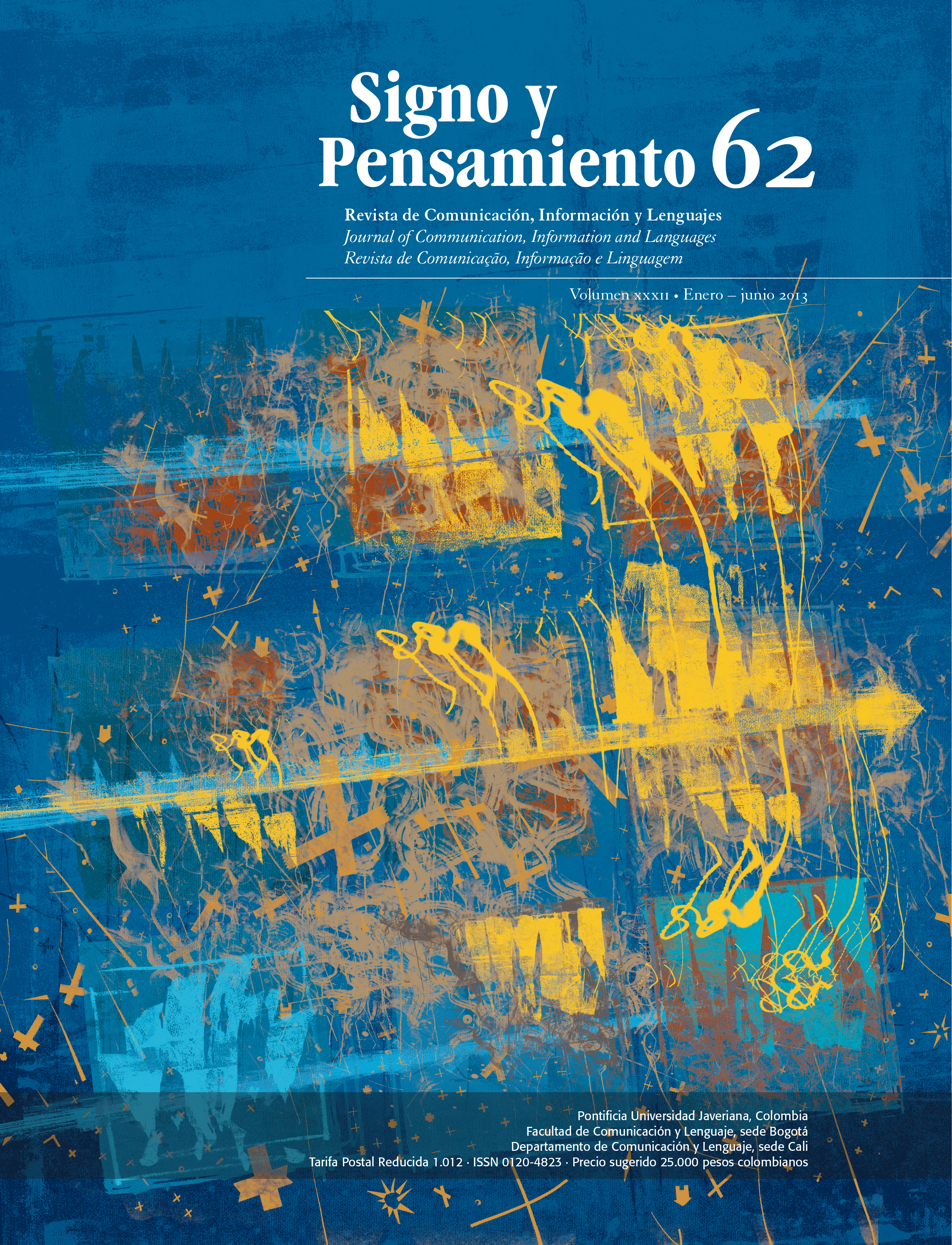Abstract
The article analyzes the relationship between the national public agenda, its media representation in the correspondence section ‘Letters to the Direction’ of the newspaper Granma and the national media agenda of the newspaper, during October and November 2009. Through the implementation of techniques and methods such as the Spearman Rho correlation coefficient, participant observation, in-depth interviews and content analysis, we evidenced the poor treatment of the objects and attributes of the public agenda in the media agenda of the newspaper Granma, and we present an analysis of the factors and actors playing against a favorable relationship between these agendas. The study is the first of its kind in Cuba and proposes a new methodology for studying the relationship between agendas, which integrates quantitative and qualitative aspects, and the mediations involved in the process.
Carrillo, E. & Tamayo, M. (2004). Los determinantes de la agenda pública. Recuperado de http://www.iij.derecho.ucr.ac.cr.
Casermeiro, A. (2004). Los medios en las elecciones. Agenda setting en la Ciudad de Buenos Aires. Buenos Aires: EDUCA.
Colunga, M. A. (2011). Mediaciones sobre el contenido de los medios que inciden en la relación entre la agenda mediática del periódico Adelante y la agenda pública de sus lectores potenciales. (Tesis inédita de Licenciatura). Universidad de Camagüey Ignacio Agramonte Loynaz, Camagüey, Cuba.
García Luis, J. (2004). La regulación de la prensa en Cuba. Referentes morales y deontológicos. (Tesis Doctoral inédita), Universidad de La Habana, La Habana, Cuba.
Martínez, Y. (2012). Tratamiento periodístico de los principales objetos y atributos de la agenda pública en la página Criterios del Periódico 26 de Las Tunas durante octubre 2011 y febrero 2012. (Tesis inédita de Licenciatura). Universidad de Camagüey Ignacio Agramonte Loynaz, Camagüey, Cuba.
McCombs, M. (2006). Estableciendo la agenda. El impacto de los medios en la opinión pública y en el conocimiento. Barcelona: Paidós Ibérica.
Piñuel, J. L. (2002). Epistemología, metodología y técnicas de análisis de contenido. Estudios de Sociolingüística 3 (1), 1-42.
Rodríguez Díaz, R. (2004). Teoría de la Agenda-Setting. Aplicación a la enseñanza universitaria. Madrid, España: Observatorio Europeo de Tendencias Sociales.
Rosabal, A. & Gallego, J. R. (2010). Las cartas sobre la mesa. Un estudio sobre la relación entre agenda pública y mediática en Cuba: caso Granma. (Tesis inédita de Licenciatura), Universidad de La Habana, La Habana, Cuba.
Shoemaker, P. y Reese, S. (1994). La mediatización del mensaje. Teoría de las influencias en el contenido de los medios de comunicación. México: Editorial Diana.
This journal is registered under a Creative Commons Attribution 4.0 International Public License. Thus, this work may be reproduced, distributed, and publicly shared in digital format, as long as the names of the authors and Pontificia Universidad Javeriana are acknowledged. Others are allowed to quote, adapt, transform, auto-archive, republish, and create based on this material, for any purpose (even commercial ones), provided the authorship is duly acknowledged, a link to the original work is provided, and it is specified if changes have been made. Pontificia Universidad Javeriana does not hold the rights of published works and the authors are solely responsible for the contents of their works; they keep the moral, intellectual, privacy, and publicity rights.
Approving the intervention of the work (review, copy-editing, translation, layout) and the following outreach, are granted through an use license and not through an assignment of rights. This means the journal and Pontificia Universidad Javeriana cannot be held responsible for any ethical malpractice by the authors. As a consequence of the protection granted by the use license, the journal is not required to publish recantations or modify information already published, unless the errata stems from the editorial management process. Publishing contents in this journal does not generate royalties for contributors.


